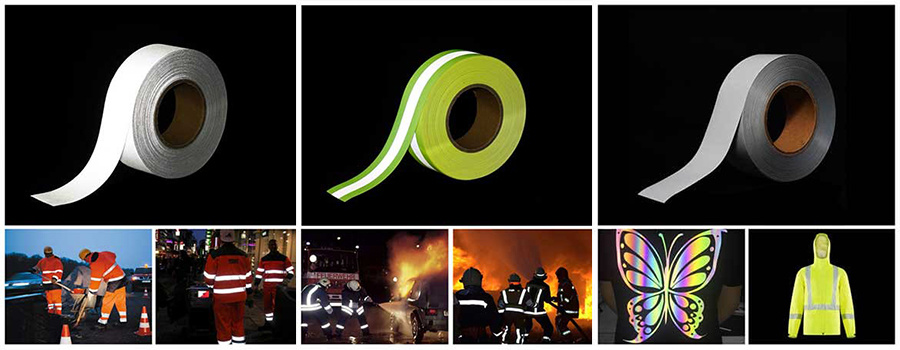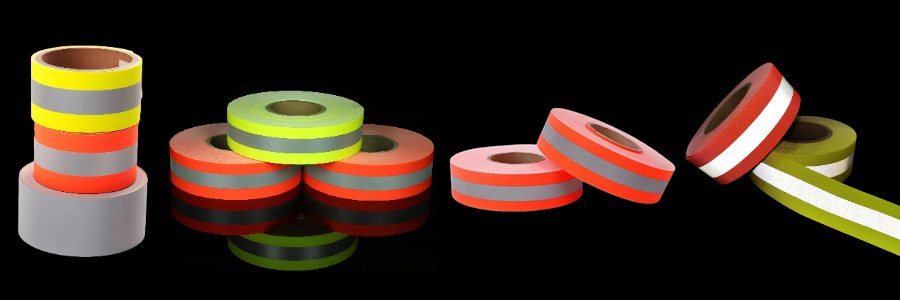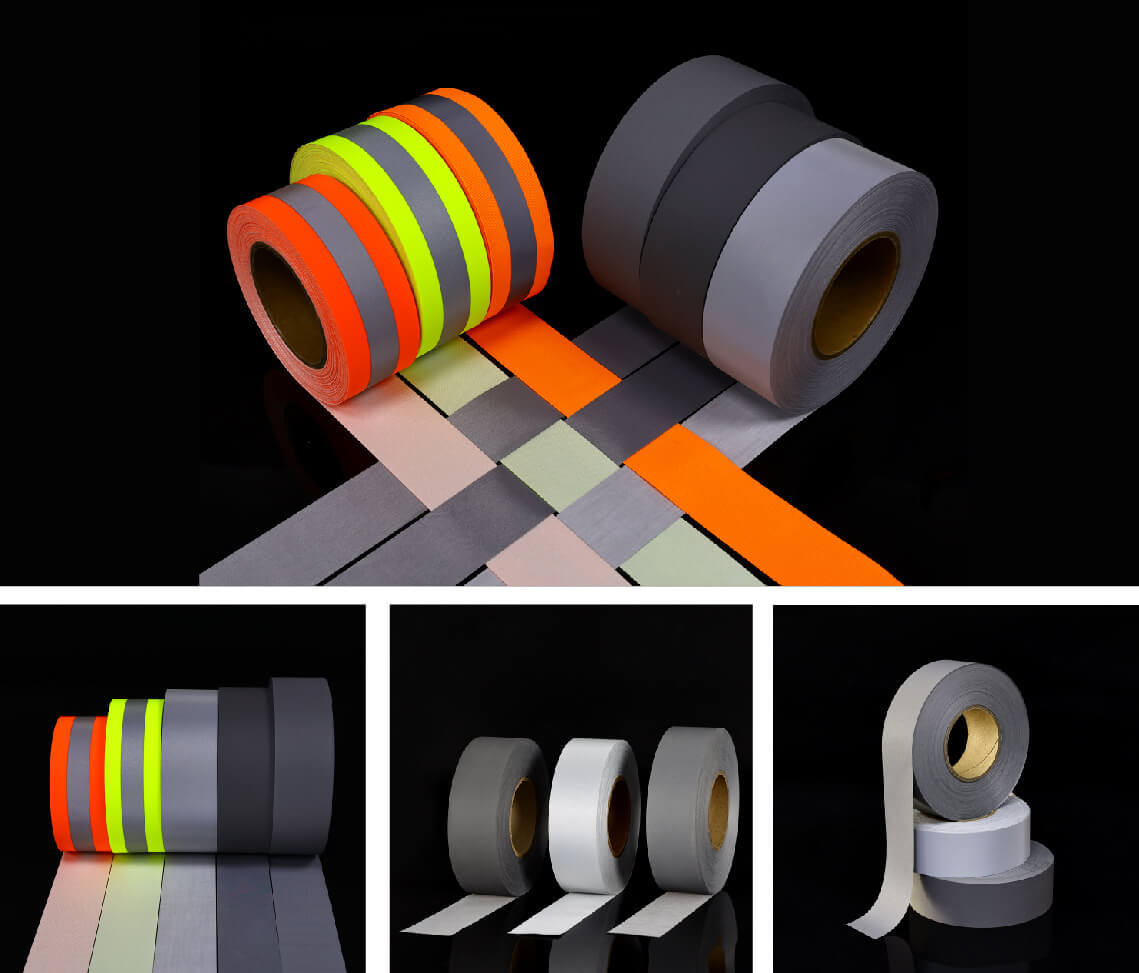Performance of Top Fire Retardant Reflective Tape When Burning
2025-03-26
Ysmlite
ysmlite.com
In the field of production safety and emergency management, flame retardant reflective tape, as an important safety protection material, not only needs to have good reflective properties, but also needs to show excellent flame retardant properties when encountering fire.
Material composition and flame retardant principle
Top-level fire retardant reflective tape usually adopts a multi-layer composite structure, including a high-performance flame-retardant substrate, a reflective coating and a specially designed adhesive.
- Flame-retardant substrate: The selected substrate is generally a polymer material, such as polyester, polyamide, etc. These materials are flame-retardant modified and embedded with flame retardants (such as halogen compounds, phosphorus flame retardants or halogen-free flame retardants), which can promote the formation of a carbonized layer and reduce flammability under high temperature conditions.
- Reflective coating: Highly reflective coatings can not only ensure good visibility in low-light environments, but also have a certain heat reflection effect, partially reducing the direct heat conduction of flames to the internal structure.
- Adhesive: Professional adhesives not only ensure the durability and adhesion of the tape, but also need to have stability at high temperatures to prevent the degradation of protective performance due to tape delamination in fires.

Physical changes under heat exposure
Under fire conditions, flame retardant reflective tape will first undergo a series of physical changes:
- Surface carbonization: The high temperature environment causes the flame retardant to react with the substrate, and a layer of carbonized material is quickly generated on the surface. This carbonized layer can isolate air and heat to a certain extent and slow down the combustion process.
- Color and structural changes: As the temperature rises, the surface of the tape may appear darker, the texture changes, and some peeling, but this does not mean that the material performance has completely failed, but it is a normal process of flame retardant reaction.
- Thermal expansion: High temperature may also cause local thermal expansion of the tape, affecting its overall size and adhesion performance, but top products are usually strictly tested to ensure that the overall protection effect is not affected within a certain temperature range.
Chemical reaction and thermal decomposition mechanism
The chemical reactions exhibited by FR reflective tape in a fire environment mainly include the following aspects:
- Flame retardant decomposition: Flame retardants will decompose when reaching a certain temperature, releasing non-combustible gases. These gases form a "barrier" in the combustion area, diluting the concentration of combustible gases and absorbing some heat energy.
- Cross-linking reaction: Some flame-retardant substrates will undergo cross-linking reaction under high temperature conditions to form a stable mesh structure, making it difficult for the combustion products to continue to spread, thereby slowing down the rate of combustion.
- Self-extinguishing mechanism: The design of high-quality flame-retardant materials includes a self-extinguishing mechanism, that is, once the fire source is removed or the temperature is reduced, the material quickly cools down and stops burning. This design not only improves safety, but also facilitates emergency treatment at the fire scene.

Multi-dimensional performance evaluation under fire environment
The design of top flame-retardant reflective tape takes into account various extreme fire conditions, and its performance evaluation includes but is not limited to the following dimensions:
- Heat release rate and combustion duration: Flame-retardant tape releases less heat at the beginning of the flame, delaying the intensification of the combustion process. After thermal decomposition and carbonization reactions, combustion is often effectively controlled in a short time.
- Smoke and harmful substance emissions: High-quality flame-retardant materials not only show low smoke and non-toxic characteristics in fire, but also can significantly reduce the release of harmful substances during the combustion process, meeting environmental protection and safety standards.
- Durability and adhesion: In a fire environment, whether the tape can maintain sufficient adhesion and structural integrity is the key. After rigorous temperature cycle testing and emergency simulation experiments, top-level products ensure that they can still play a key safety warning function under the high temperature of fire.
Customer application scenarios and safety recommendations
For customers who choose and apply top-level flame-retardant reflective tapes, we recommend:
- Strictly follow the installation standards: When installing in high-risk places, it should be pasted and regularly maintained according to professional requirements to ensure the best protection in emergencies such as fire.
- Regular testing and training: Enterprises should conduct regular inspections of relevant fire protection facilities and conduct fire safety training for employees to ensure a clear understanding of the performance of flame-retardant materials.
- Product selection and certification: Choose top-level products that have been authoritatively certified and have detailed test data to ensure that fire risks can be effectively prevented and controlled in actual applications.
Under fire combustion conditions, top-level flame-retardant reflective tapes achieve the goals of delaying combustion, reducing the release of harmful substances and maintaining adhesion stability in high-temperature environments through multiple protection measures such as material layer design, flame retardant reaction, carbonization isolation and self-extinguishing mechanism. For various safety protection and emergency application scenarios, understanding these characteristics not only helps with product selection, but also provides strong support for overall fire safety design.
Related News
How Long Can the Luminous Pigment Powder Glow? How Does It Glow?
2025-04-29
Why Fabrics Are Crucial to Reflective Tape for Clothing Performance
2025-04-25
Reflective Tape for Clothing: The Night Guardian of Safety Workers
2025-04-22





